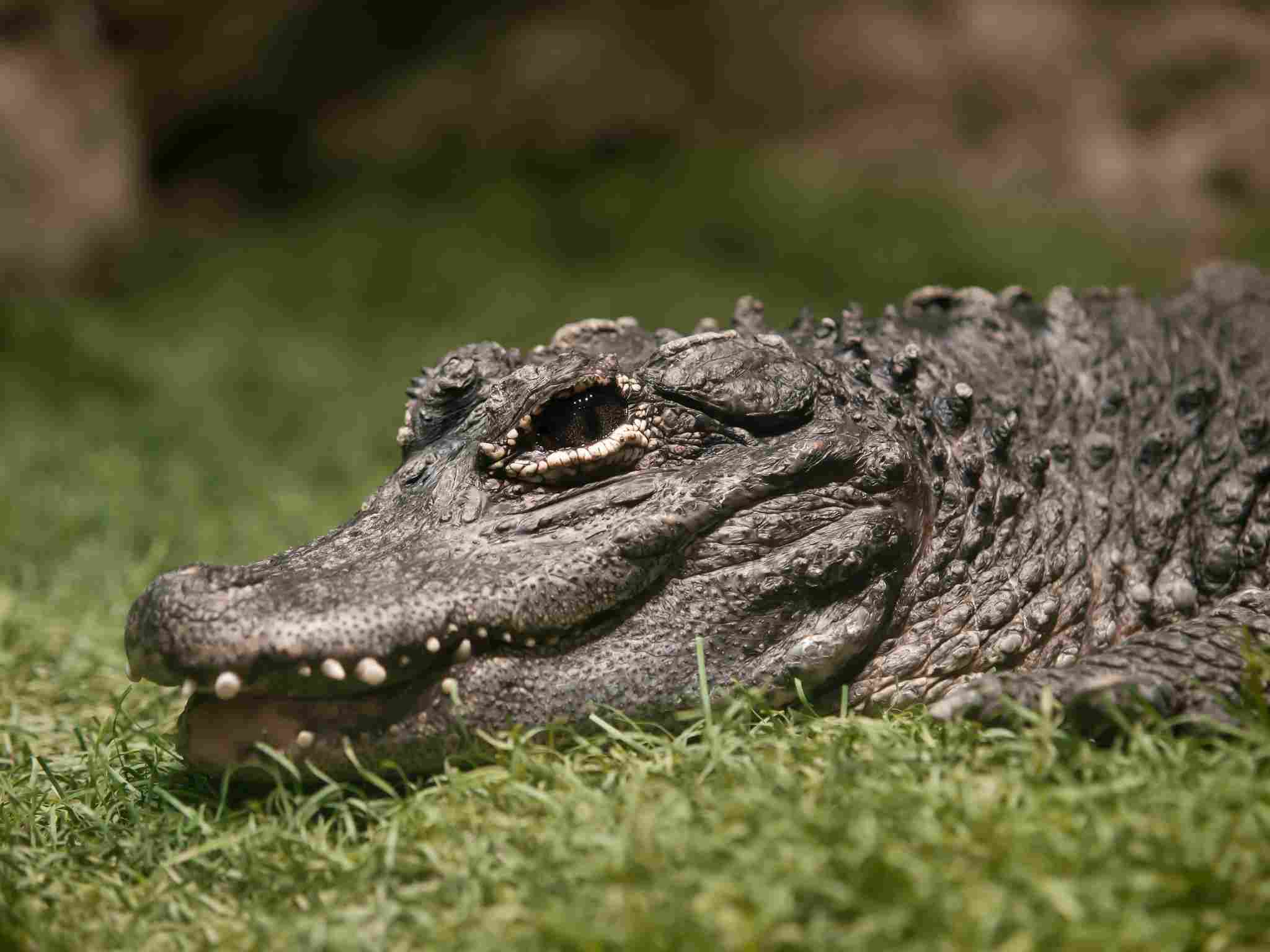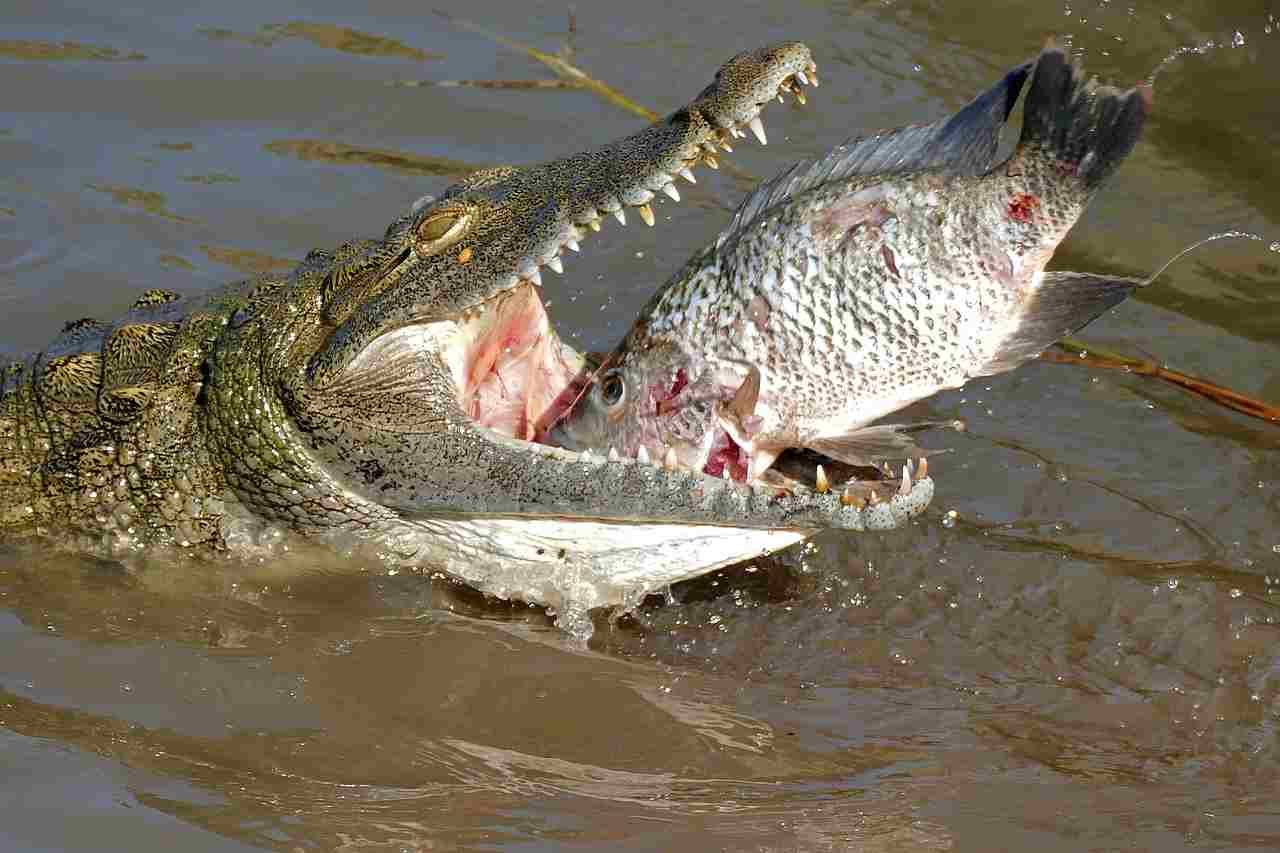Alligator Vs Snake Size, Weight, Overall Comparison
In a confrontation between an alligator and a snake, we explore the potential dynamics of this scenario, considering the reptilian and predatory nature of these animals. While both are formidable predators in their own right, the significant differences in size, anatomy, and predatory strategies influence the likely outcome of a fight. This analysis aims to highlight the inherent advantages of alligators, with their massive jaws and powerful bite force, suggesting that an alligator would likely win against most snakes due to their smaller size, lighter weight, and less predatory nature.
Alligator vs Snake: Assessing the Likely Victor in a Confrontation
In a hypothetical scenario involving an alligator and a snake, the outcome of a fight is shaped by their differences in size, anatomy, and predatory strategies. While some snakes may be venomous, the overall dynamics favor the alligator, given its massive jaws and powerful bite force, making it likely to prevail against most snakes.
I). Size and Anatomy Differences:
– Alligators are significantly larger and possess a more robust anatomy compared to most snakes. The size and strength advantages of alligators contribute to their effectiveness as predators.
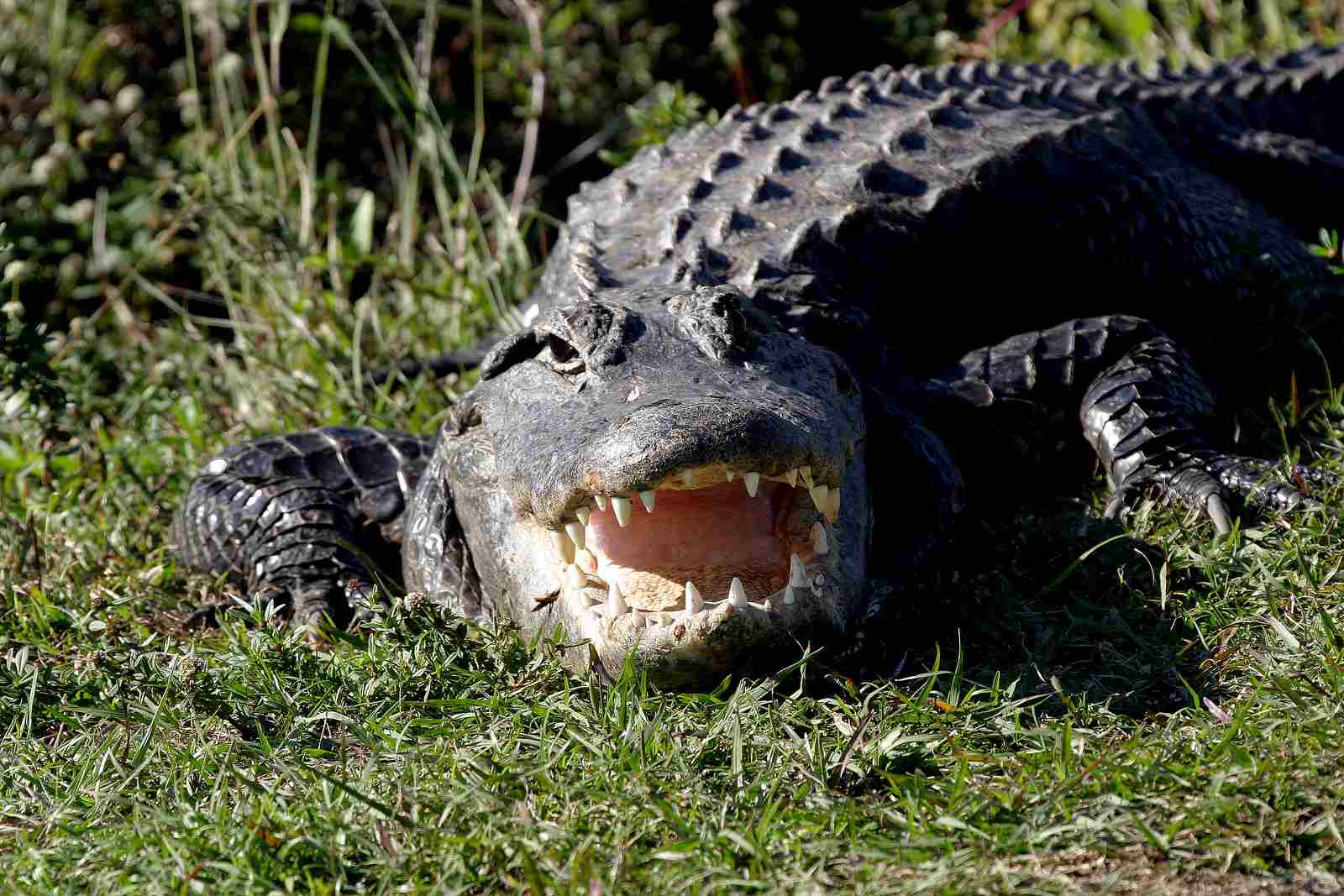
II). Predatory Nature of Alligators:
– Alligators are formidable predators with massive jaws and a powerful bite force. Their predatory nature, combined with their physical attributes, makes them dominant in confrontations with smaller and less predatory animals.
III). Venomous Snakes vs Alligator:
– While some snakes may be venomous, the overall predatory capacity of alligators, with their massive jaws and powerful bite, often outweighs the threat posed by venomous snakes. Most snakes are smaller and less predatory than alligators.
IV). Challenges from Large Constrictors:
– Large constrictors like pythons pose a more significant challenge to alligators. However, even in these cases, alligators often have the advantage due to their size, strength, and powerful jaws. There have been rare instances where large constrictors, like the Burmese python, have swallowed alligators.
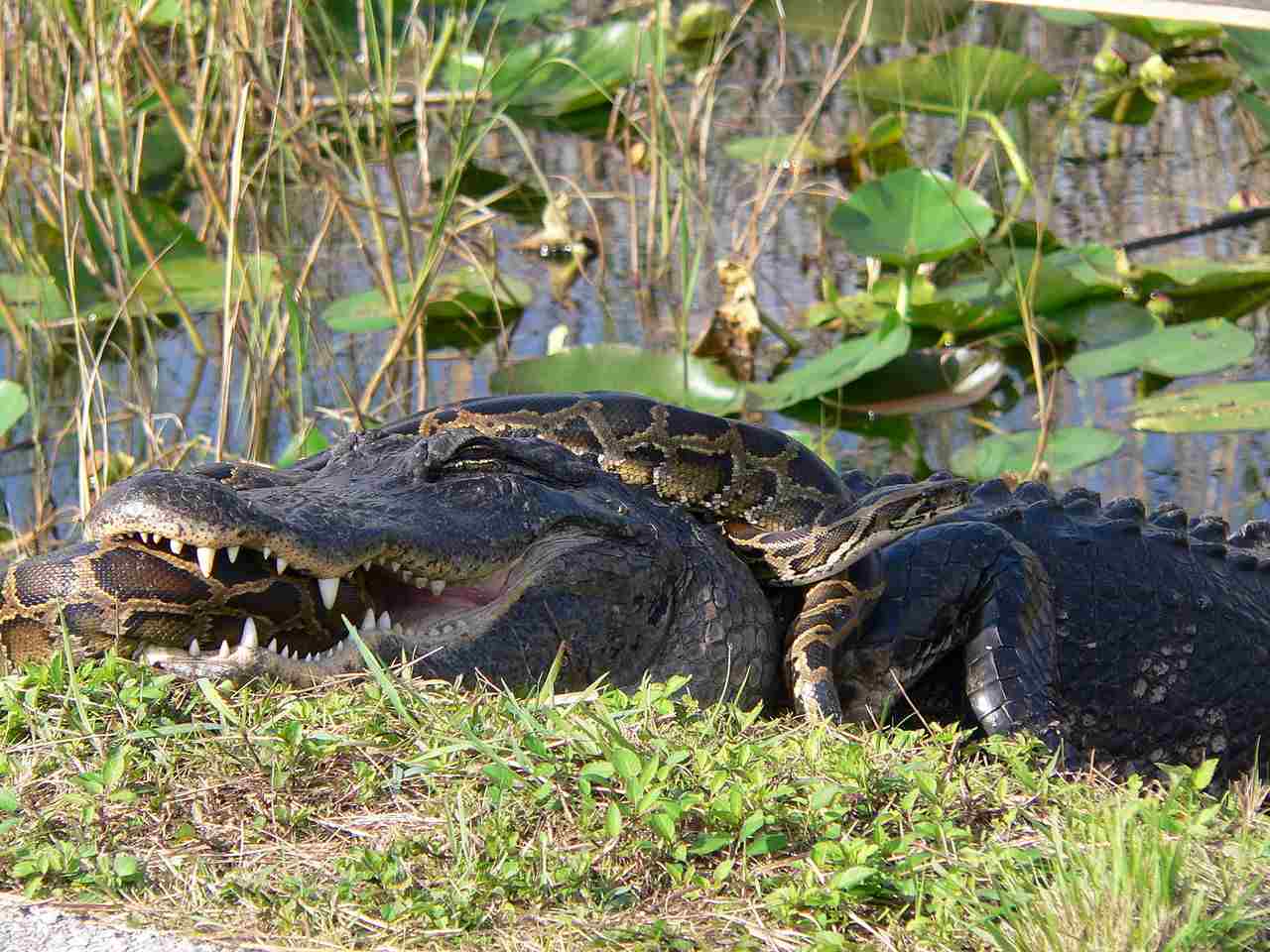
V). Rare Cases of Constrictors Swallowing Alligators:
– While alligators generally have the upper hand, there are rare cases where large constrictors, such as the Burmese python, have managed to swallow alligators. These instances, though uncommon, highlight the diverse and unpredictable nature of predator-prey interactions.
VI). Overall Dynamics:
– In this hypothetical scenario, an alligator would likely win against most snakes in a fight due to its significantly larger size, greater weight, and more predatory nature. While large constrictors may present a challenge, alligators generally have the advantage, showcasing the complexities and variations in predator-prey dynamics within the reptilian world.
*Details of Comparison
| Criteria | Alligator | Snake |
| Appearance | Robust, armored, rounded snout |
Elongated, limbless, diverse colors
|
| Size | Larger, 11-15 feet (American alligator) |
Variable, from inches to over 30 feet
|
| Weight | Heavier, males 500-1,000 pounds |
Variable, from grams to several hundred
|
| Bite Force (PSI) | 2,000 PSI |
Variable, often lower PSI
|
| Physical Offensive Adv. | Powerful bite, ambush hunting |
Venomous bites, constriction
|
| Physical Defensive Adv. | Tough, armored hide |
Camouflage, mimicry, warning signals
|
| Speed | Faster on land, up to 20 mph |
Variable speeds, some around 10 mph
|
| Agility | More agile in water |
Highly agile in various terrains
|
| Overall Physical Capacity | Well-adapted for aquatic life |
Versatile, adapts to different terrains
|
| Habitat Preference(s) | Aquatic habitats |
Diverse habitats, forests, deserts
|
| Tracks | Distinctive with claw marks, webbed prints |
Subtle belly scales impressions
|
| Lifespan | Longer lifespan, over 50 years |
Variable, from years to several decades
|
| Mode of Feeding | Carnivorous, powerful bite |
Varied, including venomous strikes
|
| Intelligence | Limited intelligence, behavior by instincts |
Limited intelligence, behavior by instincts
|
| Social Behavior | Predominantly solitary, limited interactions |
Predominantly solitary, limited interactions
|
| Mode of Reproduction | Oviparous, laying eggs in nests |
Varied, with oviparous, viviparous, or ovoviviparous reproduction
|
| Parental Behavior | Elaborate maternal care, guarding nests |
Limited parental care, some guarding eggs
|
| Proximity to Human Areas | Found near human habitats |
Found near human habitats
|
| Behavior Toward Humans | Generally avoid humans, exhibit defensive behaviors |
Generally avoid humans, exhibit defensive behaviors
|
| Danger Posed to Humans | Relatively low threat, precautions minimize risks |
Relatively low threat, precautions minimize risks
|
| Associated Precautions | Caution near water, avoid feeding |
Wear appropriate footwear, avoid handling
|
| Conservation Status | American alligator (Least Concern), Chinese alligator (Endangered) |
Varied statuses, facing threats based on species
|
| Conclusion: Similarities |
Ectothermic reptiles, crucial roles in ecosystems
|
|
| Conclusion: Differences |
Habitat preferences, maternal care, reproductive strategies, precautions for human interactions vary
|
1. Taxonomy:
Alligator:
Kingdom: Animalia
Phylum: Chordata
Class: Reptilia
Order: Crocodylia
Family: Alligatoridae
Genus: Alligator
Species: A. mississippiensis (American alligator) and A. sinensis (Chinese alligator)
Snake:
Kingdom: Animalia
Phylum: Chordata
Class: Reptilia
Order: Squamata
Suborder: Serpentes
Varied Families and Genera: E.g., Pythonidae, Viperidae, Colubridae
Numerous Species: E.g., Python regius (Ball python), Crotalus atrox (Western diamondback rattlesnake)
2. Appearance:
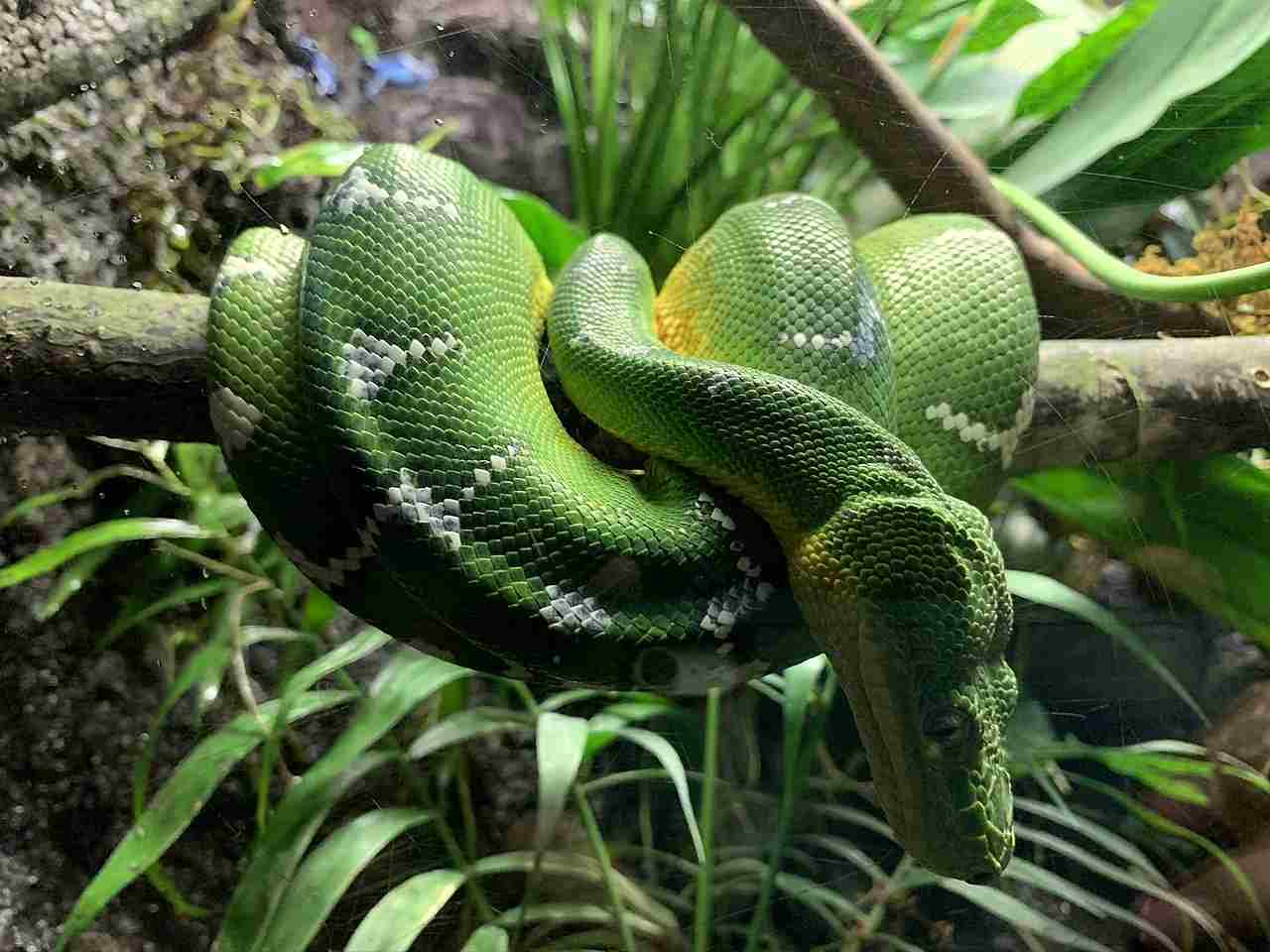
Alligator:
Robust, armored body with bony plates on the back.
Broad, rounded snout.
Dark coloration, often with lighter undersides.
Snake:
Elongated, limbless body with scales covering the skin.
Varying head shapes; venomous snakes may have triangular heads.
Diverse coloration and patterns; camouflaging for habitat.
Comparison:
Alligators have a more robust, heavily armored appearance, while snakes exhibit greater diversity in body shape and coloration.
The differences reflect adaptation to their respective ecological roles.
Ecological Implications:
Alligator appearance provides protection against predators and aids in temperature regulation.
Snake appearance, diverse and often cryptic, supports camouflage for hunting or avoiding predators.
3. Size:
Alligator:
American alligator: Males reach 11-15 feet, females 8-10 feet.
Chinese alligator: Smaller, around 4-5 feet.
Snake:
Size varies widely; from a few inches (e.g., threadsnake) to over 30 feet (e.g., reticulated python).
Comparison:
Alligators are generally larger than most snakes, especially the Chinese alligator.
Snakes exhibit greater size diversity, from tiny species to massive constrictors.
Ecological Implications:
Size influences the role in the ecosystem; larger animals may have different prey options and can impact local food webs differently.
4. Weight:
Alligator:
American alligator: Males 500-1,000 pounds, females 200-300 pounds.
Chinese alligator: Smaller, around 45-100 pounds.
Snake:
Weight varies widely; from a few grams to several hundred kilograms.
Comparison:
Alligators are generally heavier than most snakes, considering both American and Chinese species.
Snakes, while diverse in size, may have lighter body masses compared to large alligators.
Ecological Implications:
Weight affects energy requirements, prey selection, and overall ecological impact.
5. Bite Force (PSI):
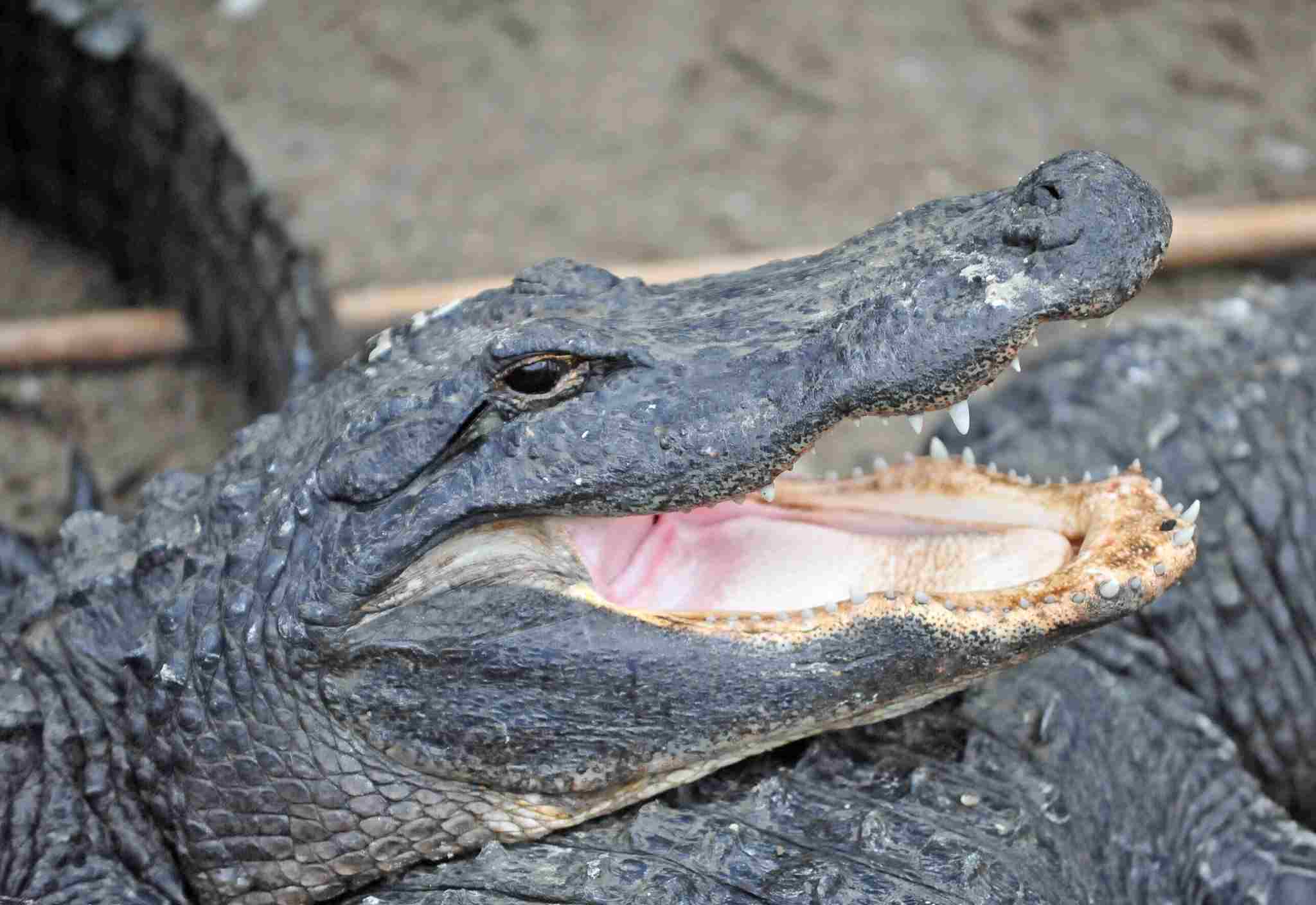
Alligator:
Around 2,000 PSI for adult American alligators.
Snake:
Varies widely among species; venomous snakes often have lower PSI but deliver venom.
Comparison:
Alligators generally have a higher bite force than most snakes.
Snakes rely on other mechanisms like venom or constriction for subduing prey.
Ecological Implications:
Bite force influences hunting strategies; alligators use sheer power, while snakes may rely on venom or constriction techniques.
6. Physical Offensive Advantages:
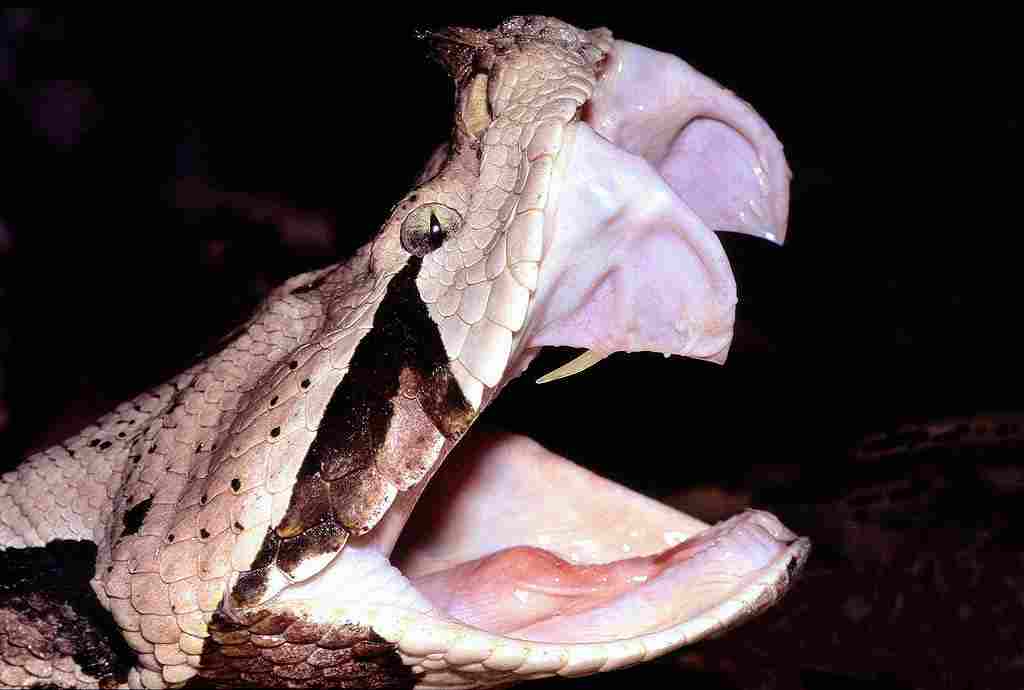
Alligator:
Powerful bite and jaw strength for crushing.
Ambush hunting strategy, utilizing camouflage.
Snake:
Venomous species have potent toxins.
Constrictors use strong coils to subdue prey.
Comparison:
Alligators rely on powerful jaws for offense.
Snakes use venom or constriction, employing diverse offensive mechanisms.
Ecological Implications:
These offensive strategies contribute to niche differentiation, allowing coexistence in ecosystems.
7. Physical Defensive Advantages:
Alligator:
Tough, armored hide provides protection.
Strong tail for propelling in water and defense.
Snake:
Camouflage and mimicry aid in avoiding detection.
Some species have warning coloration.
Comparison:
Alligators have a robust physical defense with armored scales.
Snakes employ various defensive adaptations, including hiding and warning signals.
Ecological Implications:
Defensive mechanisms influence survival rates, affecting the balance of predator-prey dynamics.
8. Speed (Km/hour or Mile/hour):
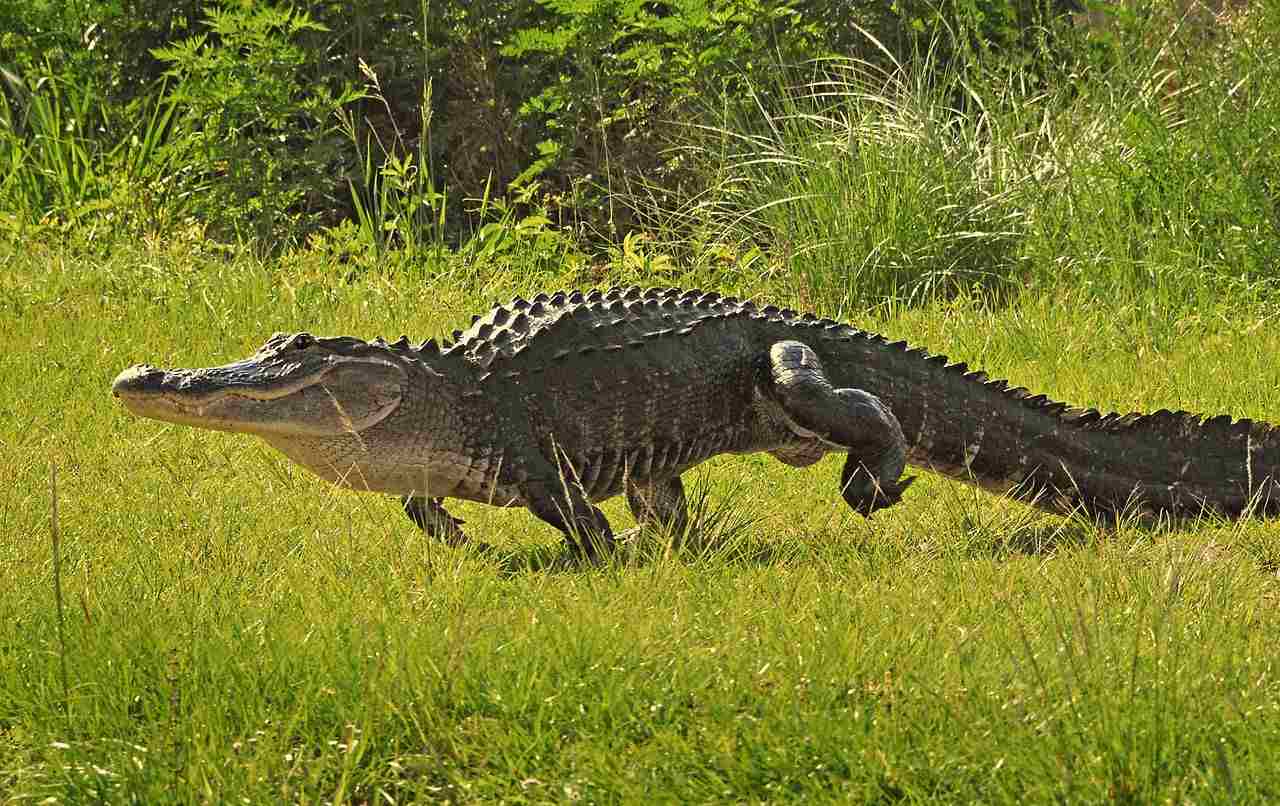
Alligator:
Can reach speeds up to 20 mph (32 km/h) in short bursts on land.
Snake:
Speed varies; some can move at around 10 mph (16 km/h).
Comparison:
Alligators generally have faster land speeds than many snakes.
Snakes exhibit diverse locomotion speeds, influenced by body shape and habitat.
Ecological Implications:
Speed impacts hunting success and evasion of predators, contributing to ecological roles.
9. Agility:
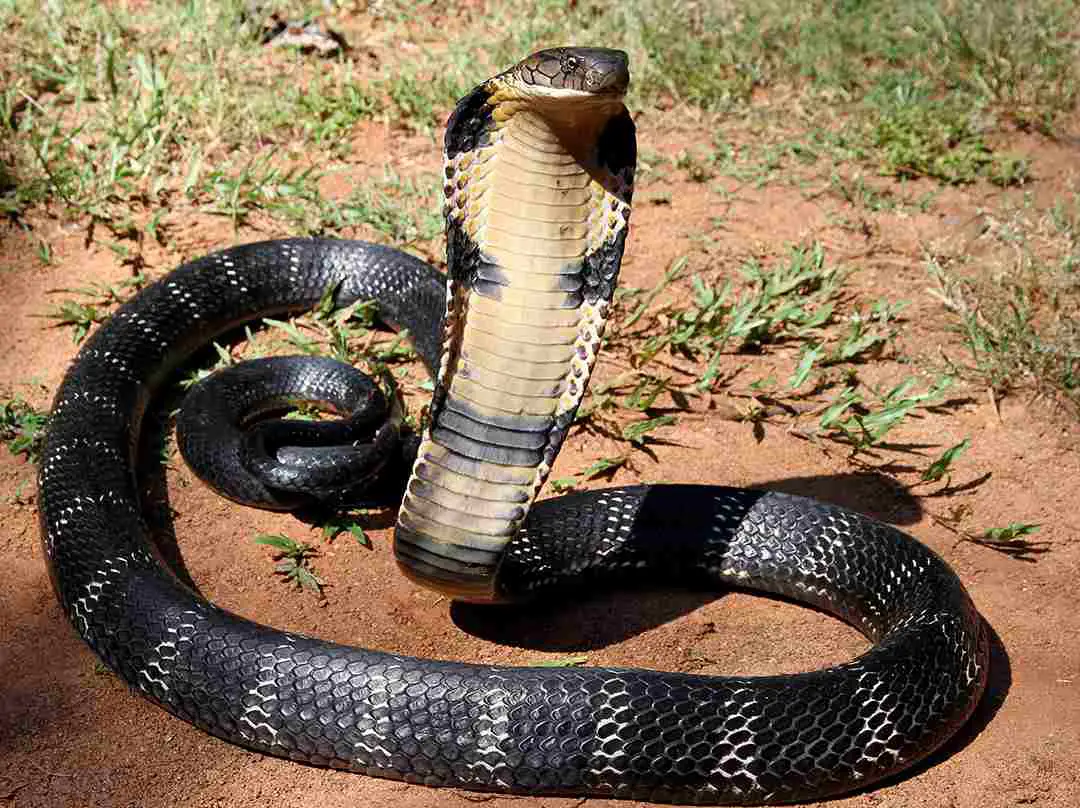
Alligator:
Agile in water, using tail for propulsion.
Less agile on land due to body structure.
Snake:
Highly agile in various environments; some can climb trees or swim.
Comparison:
Snakes are generally more agile in diverse terrains.
Alligators demonstrate agility in aquatic environments.
Ecological Implications:
Agility influences hunting efficiency, escape from predators, and adaptation to different habitats.
10. Overall Physical Capacity:
Alligator:
Well-adapted for aquatic life with strong swimming abilities.
Efficient on land for short distances.
Snake:
Versatile in adapting to different terrains; some are excellent climbers, swimmers, or burrowers.
Comparison:
Alligators excel in aquatic environments, while snakes exhibit a broader range of adaptations.
Combined, these capacities contribute to their ecological roles and niche occupancy.
Ecological Implications:
Overall physical capacity influences the distribution and impact of these species in their respective ecosystems.
11. Habitat Preference(s):

Alligator:
Aquatic habitats such as swamps, rivers, and lakes.
Construct nests in marshy areas.
Snake:
Diverse habitats including forests, deserts, grasslands, and aquatic environments.
Adapt to specific niches within their preferred habitats.
Comparison:
Alligators primarily inhabit aquatic ecosystems.
Snakes show a wider range of habitat preferences.
Ecological Implications:
Habitat preferences influence the species’ interactions with other organisms and contribute to ecosystem dynamics.
12. Tracks:
Alligator:
Distinctive tracks with claw marks and webbed footprints.
Tail drag marks may be visible.
Snake:
Lack limbs, so leave a series of belly scales impressions.
Comparison:
Alligators leave more distinct tracks due to their limbs and webbed feet.
Snake tracks are subtle and reflect their limbless locomotion.
Ecological Implications:
Tracking methods contribute to understanding the distribution and behavior of these species in the wild.
13. Lifespan:
Alligator:
Can live over 50 years in the wild.
Snake:
Lifespan varies widely; from a few years to several decades, depending on species.
Comparison:
Alligators generally have longer lifespans than many snakes.
Lifespan influences reproductive strategies and ecological impact.
Ecological Implications:
Lifespan contributes to population dynamics and ecological roles within ecosystems.
14. Mode of Feeding:
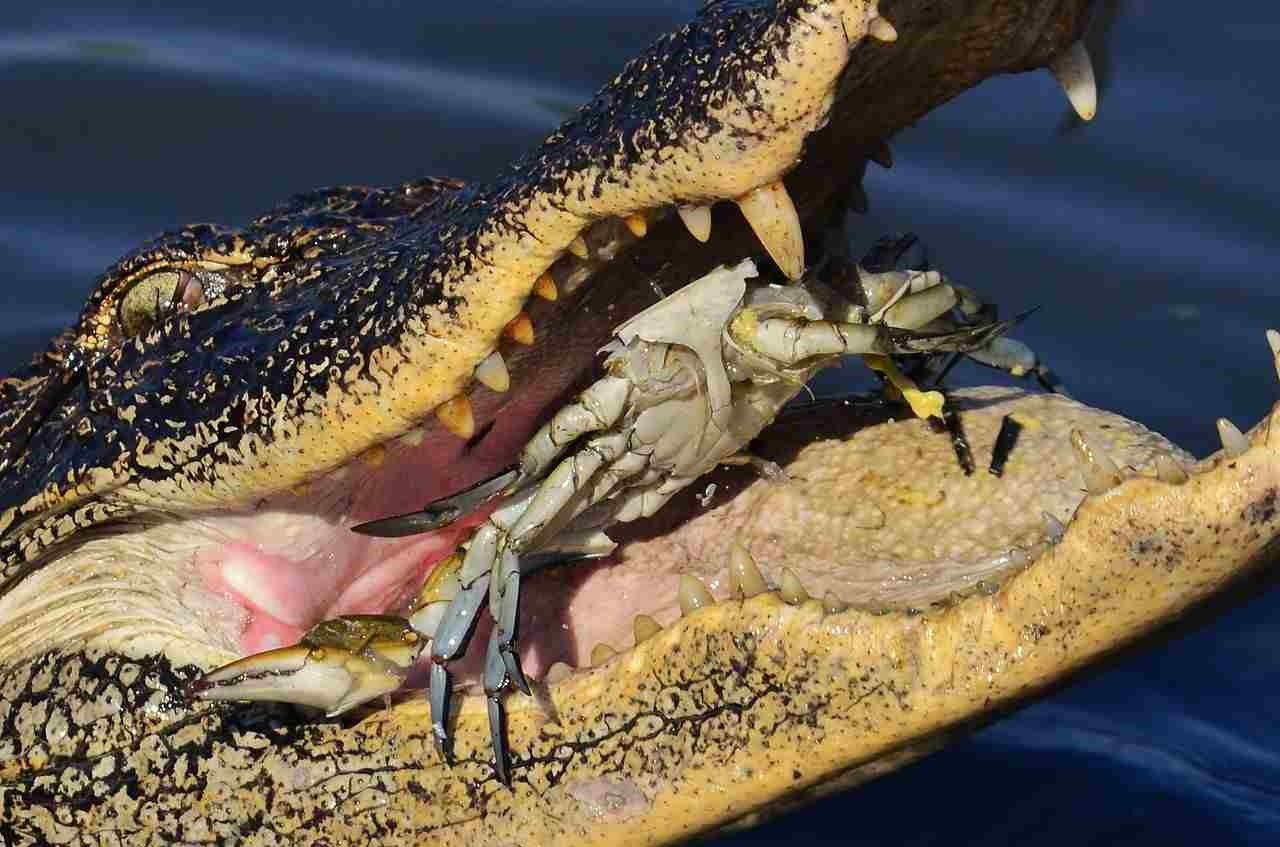
Alligator:
Carnivorous, feeding on fish, amphibians, reptiles, birds, and mammals.
Ambush predators; wait for prey to approach.
Snake:
Varied feeding strategies: carnivores, herbivores, and omnivores.
Venomous species inject toxins, while constrictors suffocate prey.
Comparison:
Alligators primarily use a powerful bite to catch and subdue prey.
Snakes exhibit diverse feeding modes, including venomous strikes and constriction.
Ecological Implications:
Feeding strategies impact prey populations and influence ecosystem dynamics.

15. Intelligence:
Alligator:
Considered more instinct-driven than highly intelligent.
Exhibit learned behaviors for hunting and nest-building.
Snake:
Limited cognitive abilities; behavior often driven by instincts.
Some species display problem-solving skills.
Comparison:
Alligators and snakes are generally not considered highly intelligent compared to mammals or birds.
Intelligence levels impact adaptation and survival strategies.
Ecological Implications:
Limited intelligence may restrict their behavioral flexibility in responding to changing environments.
16. Social Behavior:
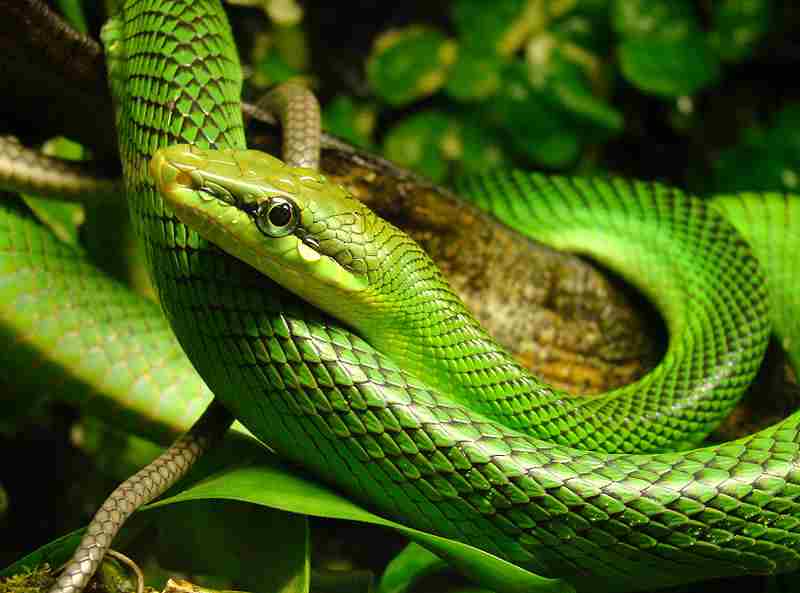
Alligator:
Solitary for most of the year.
Females exhibit maternal care during nesting.
Snake:
Generally solitary; exceptions in certain species with communal behaviors.
Limited social interactions except during mating or communal basking.
Comparison:
Both alligators and snakes are predominantly solitary.
Social behaviors are more pronounced during specific life events.
Ecological Implications:
Solitary behaviors influence population dynamics and resource utilization.
17. Mode of Reproduction:
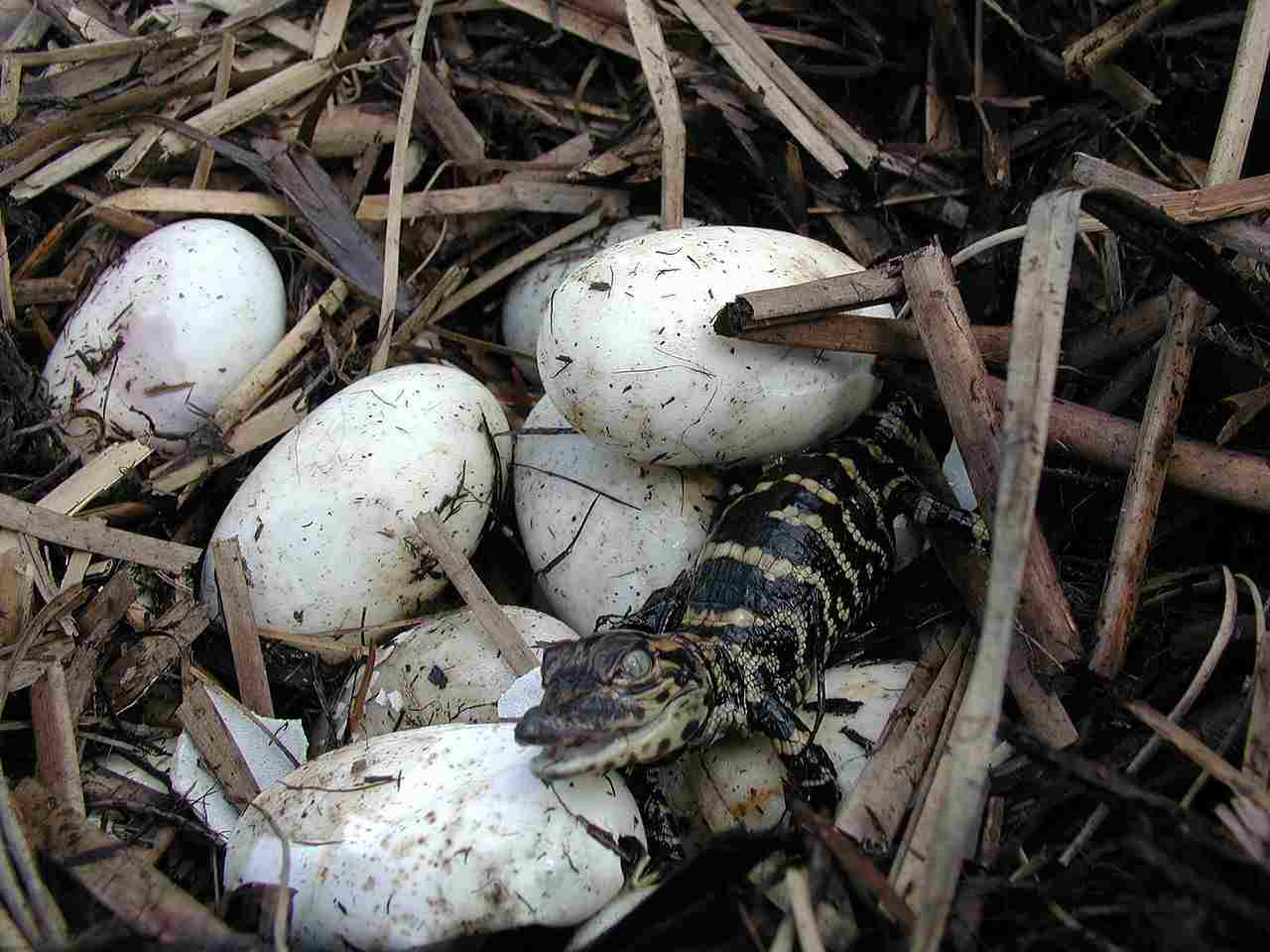
Alligator:
Oviparous; females lay eggs in nests, and parental care involves protecting the nest.
Snake:
Varied reproductive modes: oviparous (lay eggs), viviparous (give birth to live young), or ovoviviparous (retain eggs internally until they hatch).
Comparison:
Alligators have consistent oviparous reproduction.
Snakes exhibit a range of reproductive strategies, providing ecological diversity.
Ecological Implications:
Reproductive strategies impact population dynamics and adaptability to environmental conditions.
18. Parental Behavior:
Alligator:
Female alligators exhibit maternal care by guarding the nest.
May assist in hatching by gently carrying hatchlings in their mouths to the water.
Snake:
Limited parental care; some species guard eggs, while others abandon them.
No direct care for offspring post-hatching in many species.
Comparison:
Alligators display more elaborate maternal care compared to most snakes.
Parental behavior influences offspring survival rates and population dynamics.
Ecological Implications:
Parental care impacts recruitment of young into the population and overall reproductive success.
19. Proximity to Human-Inhabited Areas:
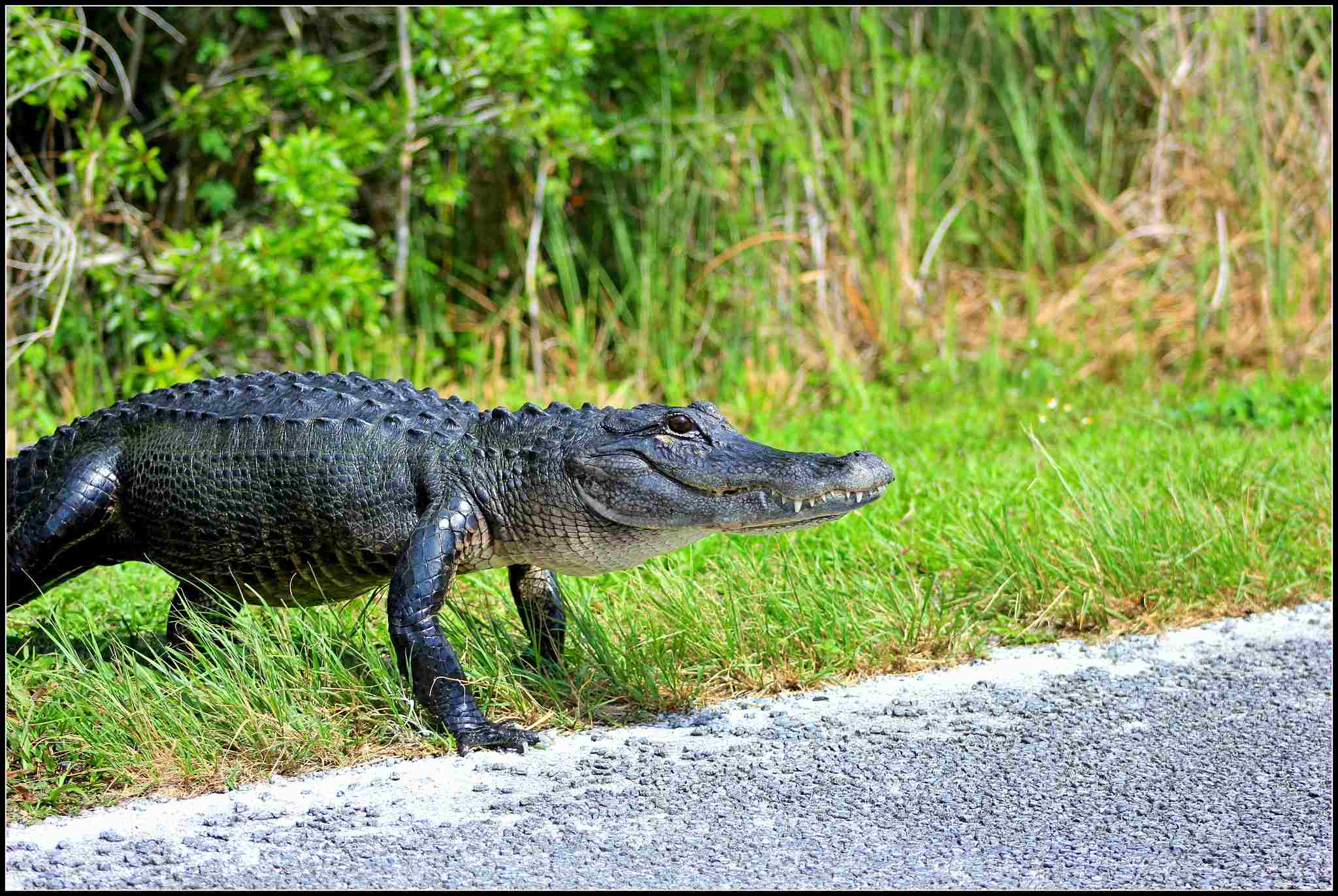
Alligator:
Can be found in close proximity to human settlements, especially in areas with water bodies.
May enter urban areas and occasionally cause conflicts.
Snake:
Varies; some snake species inhabit urban areas, especially where suitable hiding spots are available.
Venomous species may pose risks in certain regions.
Comparison:
Both alligators and snakes can be found near human habitats.
Human-wildlife conflicts are influenced by habitat preferences and public awareness.
Ecological Implications:
Proximity to humans raises conservation and management challenges, requiring understanding and mitigation efforts.
20. Behavior Toward Humans:
Alligator:
Generally wary of humans but may become aggressive if provoked.
Attacks on humans are rare, often associated with human proximity to their habitats.
Snake:
Most snakes avoid human contact; bites typically occur when humans inadvertently step on or disturb them.
Venomous species may pose a risk if threatened.
Comparison:
Both generally avoid humans, but interactions can lead to defensive behaviors.
Understanding their behavior is crucial for minimizing conflicts.
Ecological Implications:
Human-wildlife interactions influence perceptions, conservation efforts, and safety measures.
21. Danger Posed to Humans:
Alligator:
Generally poses a low threat to humans; fatal attacks are rare.
Human injuries may occur if provoked or in close encounters.
Snake:
Most snakes are non-venomous and pose minimal threat to humans.
Venomous species can be dangerous, but fatalities are relatively rare.
Comparison:
Both alligators and snakes have relatively low danger levels to humans.
Understanding their behavior and taking precautions reduce risks.
Ecological Implications:
Balancing human safety with wildlife conservation efforts requires informed management strategies.
22. Associated Precautions:
Alligator:
Avoid feeding alligators, as it alters their natural behavior.
Exercise caution near water bodies, especially in known alligator habitats.
Secure garbage to minimize human-alligator conflicts.
Snake:
Wear appropriate footwear in snake-prone areas.
Keep a safe distance and avoid handling snakes in the wild.
Be cautious in areas with known venomous snake species.
Comparison:
Precautions for alligators focus on minimizing human-provoked conflicts.
Snake precautions revolve around minimizing accidental encounters, especially with venomous species.
Ecological Implications:
Responsible human behavior is crucial for coexisting with wildlife and maintaining ecological balance.
23. Conservation Status:
Alligator:
American alligator: Least Concern (IUCN Red List).
Chinese alligator: Endangered (IUCN Red List).
Snake:
Varied conservation statuses; some species are of Least Concern, while others face threats or are endangered.
Comparison:
Conservation statuses depend on species and regional populations.
Both groups may face habitat loss, pollution, and illegal trade affecting their conservation status.
Ecological Implications:
Conservation efforts are essential to maintaining biodiversity and ecosystem health.
Summary of Comparison
Appearance:
Alligators: Robust, armored bodies with broad, rounded snouts.
Snakes: Elongated, limbless bodies with scales; diverse colors and patterns.
Size:
Alligators: Generally larger, with American alligators reaching 11-15 feet.
Snakes: Vary widely in size, from a few inches to over 30 feet.
Weight:
Alligators: Heavier, with males reaching 500-1,000 pounds.
Snakes: Variable weights, from a few grams to several hundred kilograms.
Bite Force (PSI):
Alligators: Around 2,000 PSI.
Snakes: Variable, often lower PSI, relying on venom or constriction.
Physical Offensive Advantages:
Alligators: Powerful bite and ambush hunting.
Snakes: Venomous bites or constriction for offense.
Physical Defensive Advantages:
Alligators: Tough, armored hide.
Snakes: Camouflage, mimicry, and warning signals.
Speed:
Alligators: Faster on land, reaching up to 20 mph.
Snakes: Variable speeds, some around 10 mph.
Agility:
Alligators: More agile in water.
Snakes: Highly agile in various terrains.
Overall Physical Capacity:
Alligators: Well-adapted for aquatic life.
Snakes: Versatile, adapting to different terrains.
Habitat Preference(s):
Alligators: Primarily aquatic habitats.
Snakes: Diverse habitats, including forests, deserts, and aquatic environments.
Tracks:
Alligators: Distinctive with claw marks and webbed footprints.
Snakes: Belly scales impressions, subtle tracks.
Lifespan:
Alligators: Longer lifespan, over 50 years.
Snakes: Variable, from a few years to several decades.
Mode of Feeding:
Alligators: Carnivorous with a powerful bite.
Snakes: Varied feeding modes, including venomous strikes and constriction.
Intelligence:
Alligators and snakes: Generally not highly intelligent; behavior driven by instincts.
Social Behavior:
Alligators and snakes: Predominantly solitary with limited social interactions.
Mode of Reproduction:
Alligators: Oviparous, laying eggs in nests.
Snakes: Varied, with oviparous, viviparous, or ovoviviparous reproduction.
Parental Behavior:
Alligators: Elaborate maternal care, guarding nests.
Snakes: Limited parental care, some guarding eggs.
Proximity to Human-Inhabited Areas:
Alligators and snakes: Found near human habitats, posing potential risks.
Behavior Toward Humans:
Alligators and snakes: Generally avoid humans but may exhibit defensive behaviors.
Danger Posed to Humans:
Alligators and snakes: Relatively low threat, with precautions minimizing risks.
Associated Precautions:
Alligators: Caution near water, avoid feeding.
Snakes: Wear appropriate footwear, avoid handling.
Conservation Status:
Alligators: American alligator least concern, Chinese alligator endangered.
Snakes: Varied statuses, facing threats based on species.
Conclusion:
I. Similarities:
Both alligators and snakes are ectothermic reptiles.
Play crucial roles in maintaining ecological balance within their habitats.
II. Differences:
Alligators are primarily aquatic, while snakes exhibit diverse habitat preferences.
Alligators display more elaborate maternal care compared to most snakes.
Snakes have a wider range of reproductive strategies.
Precautions for human interactions differ due to distinct behavioral traits.

